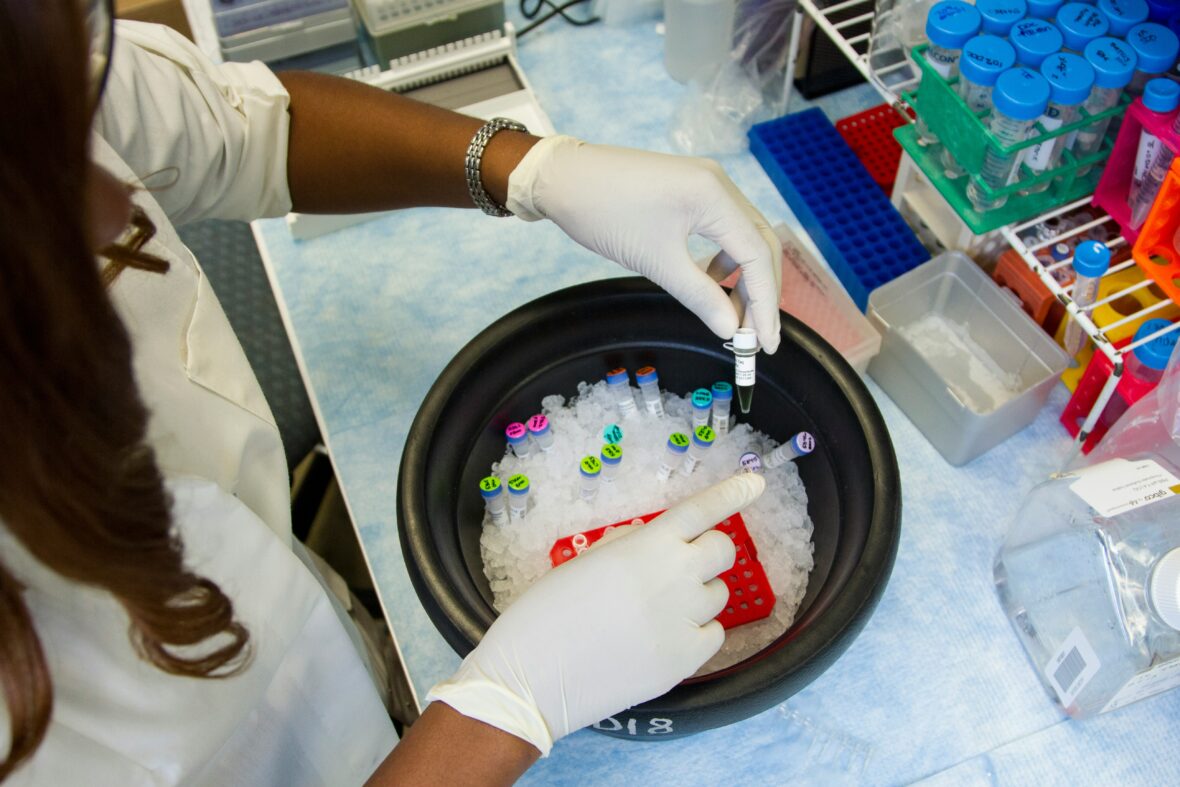This may be defined as a combination of tools, equipment, software systems, and other gadgets meant to enhance the provision of healthcare services and maintain or enhance their efficiency, and effectiveness.
Technology in health refers to the use of medical devices and technology products, involving digital health, telecare, telehealth, health information technology, wearable technology, and artificial intelligence in health care.
The breakdown of key components can be discussed below. Read more similar posts on our medicine and health page.

Components of Health Technology
These devices apply mainly in diagnosing, treating, monitoring, and rehabilitating diseases across different specialities.
Digital Health Solutions
Electronic health is defined as a collection of technology solutions that seek to intervene in health delivery and improve people’s health, such as EHR, Telemedicine platforms, mHealth apps, Remote monitoring devices, and HIETs. Digital health solutions incorporate ICTs in the communication, sharing, and processing of information among the involved stakeholders of the healthcare sector.
Telemedicine
Telemedicine is defined or can be described as the practice of medicine and health care services through the use of technology-enabled communication.
Telemedical applications conduct human interactions by allowing for distance consultations, remote supervision, and instruction to the participant, overcoming geographical obstacles and gaps in care delivery, specifically in rural regions.
Health Information Systems
Health information systems can refer to, IT systems that have been used in the management, collection, storage, and sharing of health information. These are electronic health records (EHRs), electronic prescribing (also known as e-prescribing), clinical decision support systems (CDSS), and Population health management systems.
Information systems are defined as adaptive tools and technologies that help enhance, manage, and organize health information towards improving administrative procedures and clinical documentation as well as to support healthcare decision-making.
Wearable Technologies
Wearable devices include exercise-tracking gadgets, smart wristbands, and biosensors that track or record, physiological parameters, movements, or health behaviours in real-time. These devices also have usefulness in terms of understanding the general state of health of people; diagnosis of possible scarce conditions; and encouraging healthy lifestyles.
Artificial Intelligence (AI) in Healthcare
AI offers the potential to increase diagnostic efficiency and effectiveness, manage the supply and demand for services more effectively, as well as to improve the quality of care for the patient.
Healthcare Robotics
In the current world, the use of Robotics technology has been extensively applied in the health sector, especially in conducting operations, rehabilitation, and helping the disabled. Surgical robots specifically undergo operations with minimal invasiveness, while possessing impressive control, whereas robotic exoskeletons facilitate mobility retraining amongst those with disabilities or injury.
Central Factors
Various studies have indicated that health technology is a central factor that revolutionizes the face of healthcare provision by influencing aspects such as development, effectiveness, and design.
As a result, the mainstream emergence of health tech solutions within clinical workflows, as well as person-centred health portfolios, may catalyze the reformation of care delivery models, and convey heavily transformative influences on the health system and its attainment of health equity ambitions and related population health objectives.
Common Issues
It is important to have strategies in place to handle common issues such as decision-making, reimbursement, and scalability for telemedicine, which has become prominent in present-day healthcare. The rapid advancement in technology, the necessity of healthcare, and the discovery of the craft have placed telemedicine at the frontline, especially in 2020.
Hence, the following paper will expand on the use of telemedicine, the advantages and some of the drawbacks of this type of healthcare, and the probable advancement that might be witnessed moving forward.
Benefits of Telemedicine
Accessibility
Telemedicine is an extension of the normal practice of medicine through the use of telecommunications technology in delivering care to persons in remote places or those who cannot easily access standard healthcare services. This means patients can get consultations or avail medical advice without the barriers of distance and geographical location making it useful in equalizing health disparity.
Convenience
The usefulness of telemedicine is inadmissible in this contemporary era. They do not have to spend time and transport costs getting to clinics only to be advised to come back after some time or to attend other related errands. This is especially good for a myriad of reasons for people with physical disorders, time constraints or transport jam problems.
Cost-effectiveness
In the case of telemedicine, this intervention means efficient cost savings for both consumers and providers. All the essential costs such as transport, parking, and even child care are substantially reduced since these telemedicine calls do not require face-to-face appointments. Also, telemedicine eliminates indirect costs on practices and hospitals, which hints at possibilities for saving on personnel rooms and equipment expenses.
Continuity of Care
One of telemedicine’s greatest strengths is the ability to provide continuity of care because patients with chronic illnesses make frequent visits while others who have undergone a procedure or surgery require regular check-ups.
Enhanced Efficiency
Telemedicine makes healthcare service delivery efficiencies quickly and effectively to help reduce resource utilization burdens. Healthcare providers can keep, retrieve, and update organizational patient appointments and electronic medical records and communicate within the care team, thereby enhancing patient care.
Challenges of Telemedicine
Digital Divide
The use of Telemedicine only makes matters worse because it deepens the disparities that already exist concerning the accessibility of healthcare services.
The primary area of social concern is the emerging “digital divide” where individuals, households, and business establishments have varying levels of Internet connectivity.
This is control over technology and possession of such devices as laptops and smartphones; minority and vulnerable groups are considered to be affected most sharply in this aspect.
This gap should be closed deliberately to offer fair and equal access to telemedicine services and the technology systems behind these services.
Regulatory Hurdles
Telemedicine practice remains challenged by legal frameworks, telemedicine practice licensure, reimbursement, and the credentials of privacy and liability.
The differing laws and policies in different countries and states present issues for those in healthcare organizations and settings who are pursuing the opportunity to provide remote care services through telemedicine across state or country lines.
To enhance the effectiveness of using telemedicine software for healthcare diagnosis and treatment, there is a need to harmonize the rules and ensure compliance with the existing laws.
Technological Limitations
It is very important to point out that telemedicine is not without its drawbacks even though the world is already in the age of Information and Technology.
Systems integration, limited bandwidth, and lack of seamless interoperability remain some of the key barriers to the effective running of telemedicine systems.
Furthermore, telemedicine is less accessible to patients, including forced Wi-Fi and devices, mainly because of the existing technological divide between different communities.
Quality of Care Concerns
Some of the common arguments people have about telemedicine include issues to do with the quality of care that is progressive via technology and that which is progressive through conventional face-to-face appointments.
On the same note, although telemedicine has its advantage in convenience and access, critics have raised precedence that it may lead to a more superficial physical assessment, diagnostic inaccuracies, and even a lesser degree of engagement in therapeutic patient-doctor relationships.
To mitigate these risks, there is a need for constant training and education of healthcare practitioners, and the use of technology must be adopted in delivering virtual care.
Security and Privacy Risks
Unfortunately, the most important aspect of telemedicine platforms incorporates significant risks for cybersecurity, data leaks, and breaches of privacy.
The security of patients’ information and the information exchange process remain the most critical challenges of telemedicine because of such sensitive information about health.
Strong cryptography, and availability of procedures that ensure the identity of parties involved in the communication.
This is adherence to details provided under legal frameworks regarding the protection of personal data in telecommunication are features that are critical to ensuring the privacy of the patient in telemedicine services.
Future Directions of Telemedicine
Integration with AI and IoT
The adoption of AI and IoT technology will have significant possibilities for broadening the processes of telemedicine. The use of AI in diagnostics, analytics in patient data, and remote health-monitoring technologies help in better clinic decision-making, more customizable patient care outcomes, and real-time anomaly detection.
Expansion of Specialties
Telemedicine is also expected to grow from being limited to the management of chronic diseases and other primary care services, including speciality services such as mental health, dermatology care, cardiology, and oncology.
There is sometimes a need to address specific patient abilities and particular healthcare requirements, in which specialized telemedicine solutions are sophisticated enough to offer such resources and professional advice remotely.
Interdisciplinary Collaboration
Integrated approaches that link healthcare professionals, information technology specialists, public key decision makers, and academicians are required to improve telemedicine initiatives.
Multi-disciplinary telehealth care teams are well-positioned to solve multifaceted problems which include regulatory, technical, and clinical ones necessary for creating new offerings and the optimization of invoking those in clinical practice that respond to telehealth needs.
Virtual Reality (VR) and Augmented Reality (AR)
Modern telemedicine could be a breakthrough in VR and AR technologies allowing doctors and patients to get together in live virtual space, practice surgical interventions, and teach patients about health and diseases.
This is where VR-based telemedicine platforms can contribute, opening up a new area of opportunities in the field of telemedicine including improved telecommunication, medical education, and patient involvement.
Global Reach
Telemedicine can also break the boundaries of the nation and thus come as a tool for international cooperation, medical tourism, disaster relief, and other types of humanitarian assistance.
Telemedicine projects implemented around the world are intended to improve the quality of healthcare in underserved areas, exchange experience, and provide consultations from acclaimed professionals in various spheres of healthcare to the areas that lack both resources and professionals.
Thus, telemedicine is an innovative phenomenon in the present century healthcare systems where numerous opportunities, threats, opportunities- threats, and possibilities of the future are apparent.
Conclusion
To the appreciation of technology and innovation together with interdisciplinary talent, telemedicine holds a bright future in reforming the healthcare delivery system, increasing health efficiency, and expanding the available medical facilities and services across the world.
However, to fully unlock the potential of telemedicine, overcome the obstacles, and align for proper regulation, more should be done especially in admitting patient-centred care in a new era of technologies.
As telemedicine progresses, its applications will only grow in the future healthcare and medical systems, thus demonstrating its impact on future generations of healthcare.










